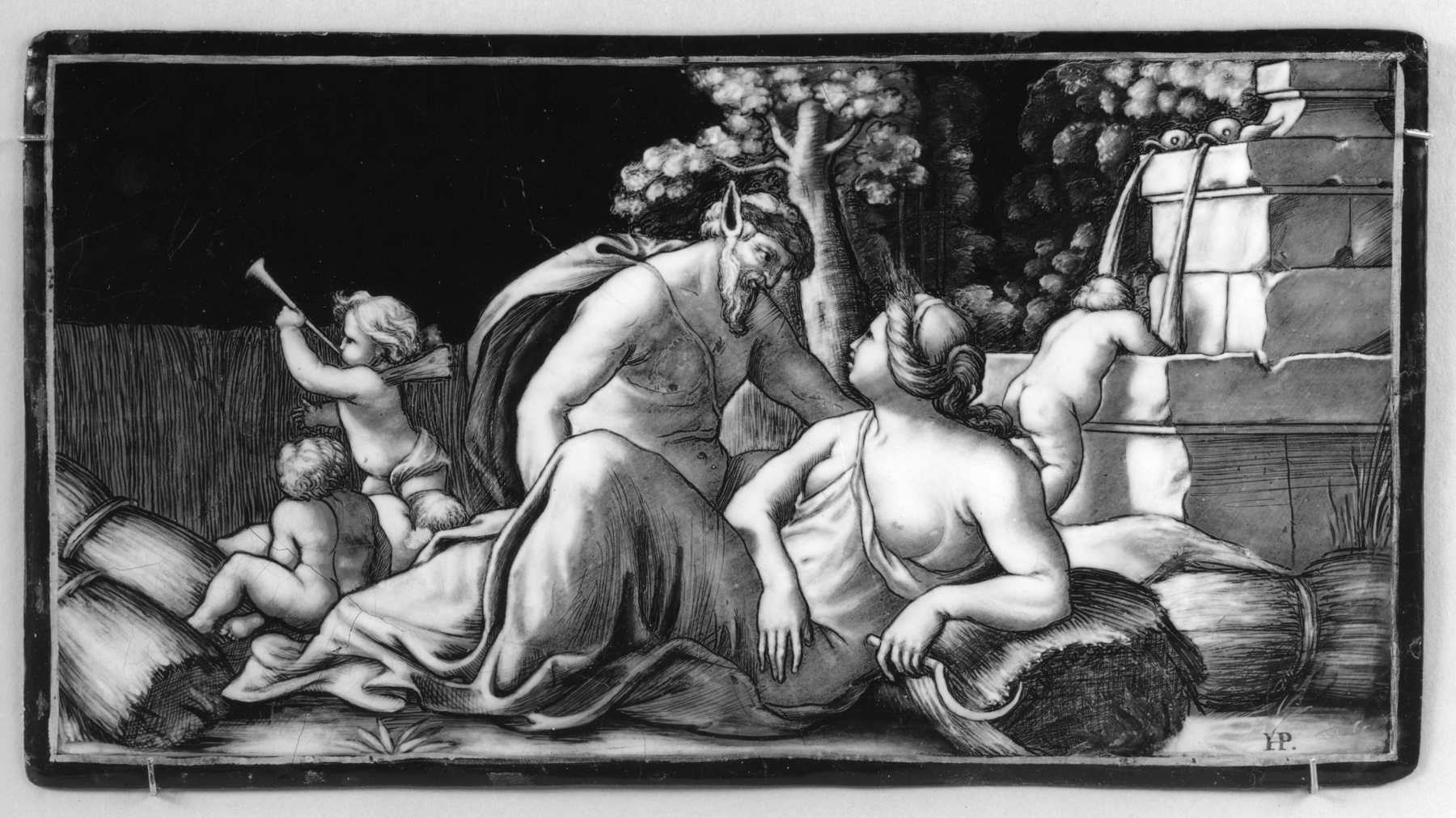Allegory of Summer
(Renaissance Europe )
this plaque and its companion Allegory of Spring (44.174) wre surely intended as two of four similar plaques celebrating the Four Seasons, a popular subject in the 1600s. The Satyr and the woman along with their attributes of harvested grain conveya sense of ribe fullness. A half-draped female figure reclines with her left elbow leaning on a sheaf of wheat and a sickle in her left hand, while a faun, naked except for a blowing mantle tied by a string across his chest, squats down to gaze at her. On the right a child dips his arms in a fountain where two jets of water issue from the mouths of dolphins. At the left, in front of a field of grain, a child is seated near two wheat sheaves and a putto stands to blow a trumpet.
Inscription
Provenance
Provenance (from the French provenir, 'to come from/forth') is the chronology of the ownership, custody, or location of a historical object. Learn more about provenance at the Walters.
Jacques Seligmann, New York [date and mode of acquisition unknown]; Henry Walters, Baltimore, 1908, by purchase [Emile Rey as agent]; Walters Art Museum, 1931, by bequest.
Geographies
France, Limoges (Place of Origin)
Measurements
H: 4 1/8 x W: 7 1/2 in. (10.5 x 19 cm)
Credit Line
Acquired by Henry Walters, 1908
Location in Museum
Not on view
Accession Number
In libraries, galleries, museums, and archives, an accession number is a unique identifier assigned to each object in the collection.
In libraries, galleries, museums, and archives, an accession number is a unique identifier assigned to each object in the collection.
44.173



